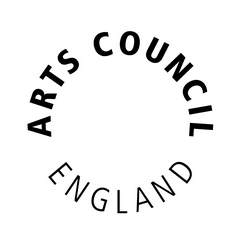In the previous blogs on the Content Investment Forum organised by BCre8ive and Digital Catapult we covered the initial issues, and a range of experiences from freelancers and micro companies. In this final blog in this series we are looking at public commitment and private opportunities. The aim of the forum was to start a dialogue about how we could improve the investment landscape for content creation, given that the vast majority of active participants in the creative industries are freelancers and micro-companies of less than four people.
The story so far
The need to focus on content creation has been established, as has the need for new financial structures and support organisations. The key now is to review what is currently available and planned for 2018 and beyond. In particular, how the various options for finance and support can be co-ordinated and improved. In addition, there is the issue of identifying gaps in the content creation pipeline and how we might fill them.
Public Commitment
With a new Government Industrial Strategy – see previous blogs – and in particular the sector deal for the creative industries not yet published 2018 has a large question mark over what government support will actually be available. However, as was explained at the Forum two major aspects of funding are guaranteed. The first is the AHRC Creative Clusters programme. The second is the existing £400m Arts Council of England budget, and the equivalent for the other UK nations – over £200m.

As Andrew Chitty explained, the AHRC programme with an ambitious target budget of £80m, and as part of the new Challenge Fund, aims to create up to eight creative clusters in the UK with an initial spend of £29m. This will be achieved, via the University network, and will start delivering in autumn 2018 and run for the next five years . The idea is to use Universities resources and Cluster fund monies to solve creative industry problems.
The major limitation on this from the perspective of content creation is that much of the money may be spent on aspects of the creative industries which are not focussed on original content creation e.g. museum and gallery curation, In addition, the timescale has left little opportunity for freelancers and micro-companies to be part of the initial bid process. Therefore, ensuring the creative clusters, when final agreed upon, actually address content creation is one of the big challenges of 2018.

The various Arts Council’s programmes are effectively decided for the coming years. However, Francis Runacres, made it clear that there are sums in the next two years programme which could be still aimed at new groups. In addition, he asked for suggestions for the 2020-2025 programme, which could address the needs of the freelance and micro-company communities. Particularly relevant for new emerging digital art forms, short term projects and development work for individual artists in all mediums.
The Grants for the Arts programme with its small scale, fast turn around process, along with the renewed Games Fund, provide examples of how initial development support for new creative content can be supported. However, the key aspect of this type of funding is how do you then move up to the next level of development, and ultimately reach out to a large audience? This is not to suggest that all creative work needs to reach a mas audience but given that one art work can support a small studio – it is the commercial potential, which really needs to be identified.
This latter point also illustrates a key aspect of future investment. Namely, that productivity and profitability may come in multiples of work not in one big hit. There are few freelancers or micro-companies who will grow to be the equivalent of Aardman Animations or King – but it is definitely possible that 100 creatives could generate as much total revenue.
Private Opportunities
There are a number of ways in which private investment may engage with original content creation. These range from tax schemes through incubators to Angle support and crowdfunding.
The latter, which often initially amounts to ‘the bank of Mum and /Dad’ plus Friends, has seen numerous small designer companies launched and graphic novels get of the ground. The most successful crowdfunding has been committed documentaries with a clear target audience, and projects that are based upon an existing brand or personality.
The tax system has been a major focus of support for creative industries in the recent past. However, the recent HMRC clamp down on EIS usage for film production may be seen as a step backwards for investment in creative content. The point to make here is it is all about proving risk, and creative content creation is by its very nature risky. In addition, the other major tax break, around R&D spend, is still largely under utilised as a source of cash flow support for creative enterprises.
However, it is the area of incubators and accelerators, as Hazel Hutchison from Aegis pointed out, which is the key space in which investment has to date been lacking. It is also the part of the ladder of creative development, which has less risk than say the Grants for Arts level of activity. In addition, with effective portfolio development, it has the potential to unlock the numerous profitable creative activities, and support a range of freelance work.

The Future Approaches
In order to make this work, new types of organisation – such as the Biome Collective, with its core freelance members and wider associates – will be needed. Reviewing how Intellectual Property rights and values are distributed across several people or within a portfolio will also have to be addressed.
All of this speaks to a need to re-think how we make investments in creative content. Creating a ladder of opportunities as outlined by Peter Bazalgette in his independent review of the creative industries is essential. Critical to its success is a solid financial investment structure which reflects the reality of the sector and is agile enough to respond to changes in direction by creative. It will take patient finance in many cases and a portfolio approach to ensure the risk taken is not an attempt at the failed ‘cherry-picking’ model.
